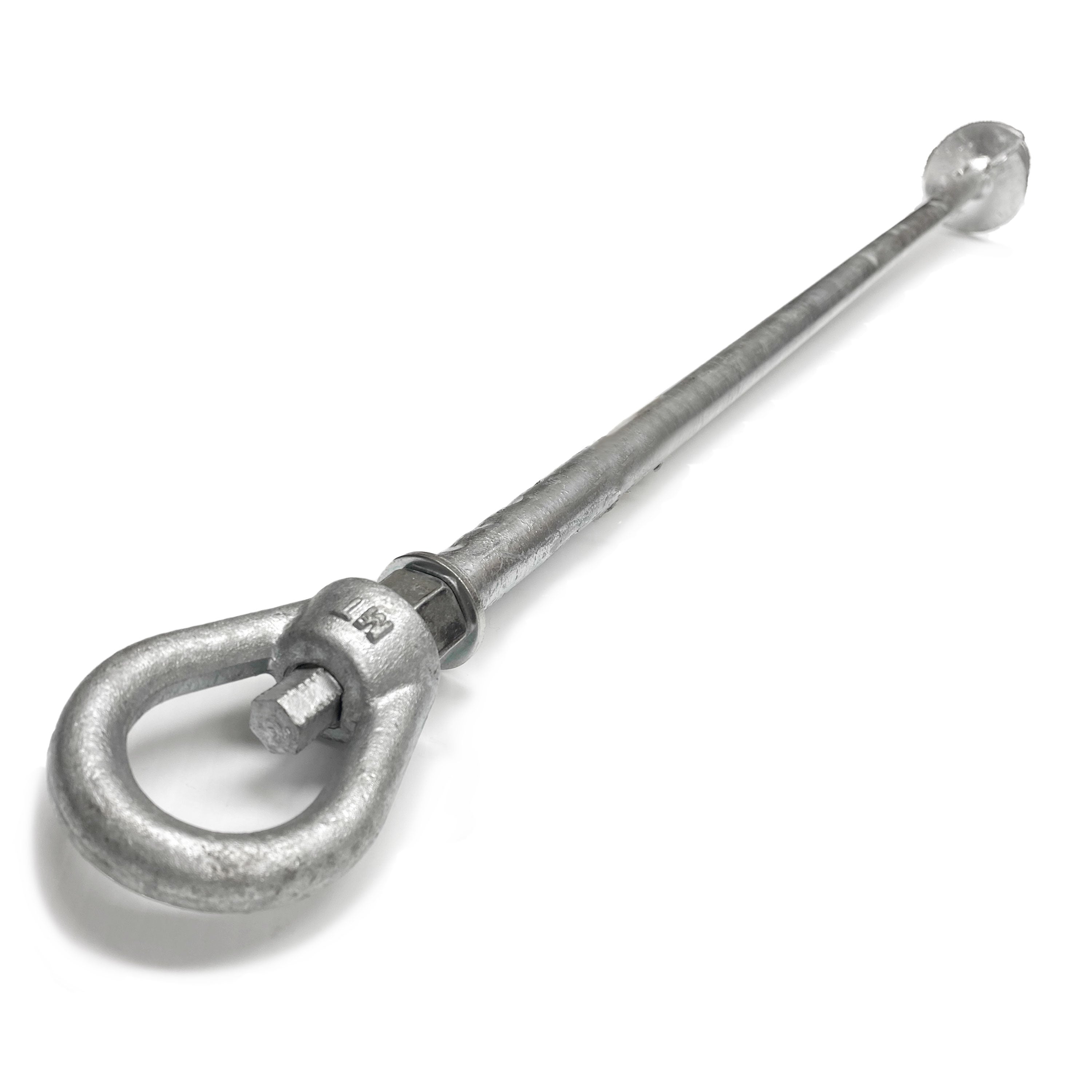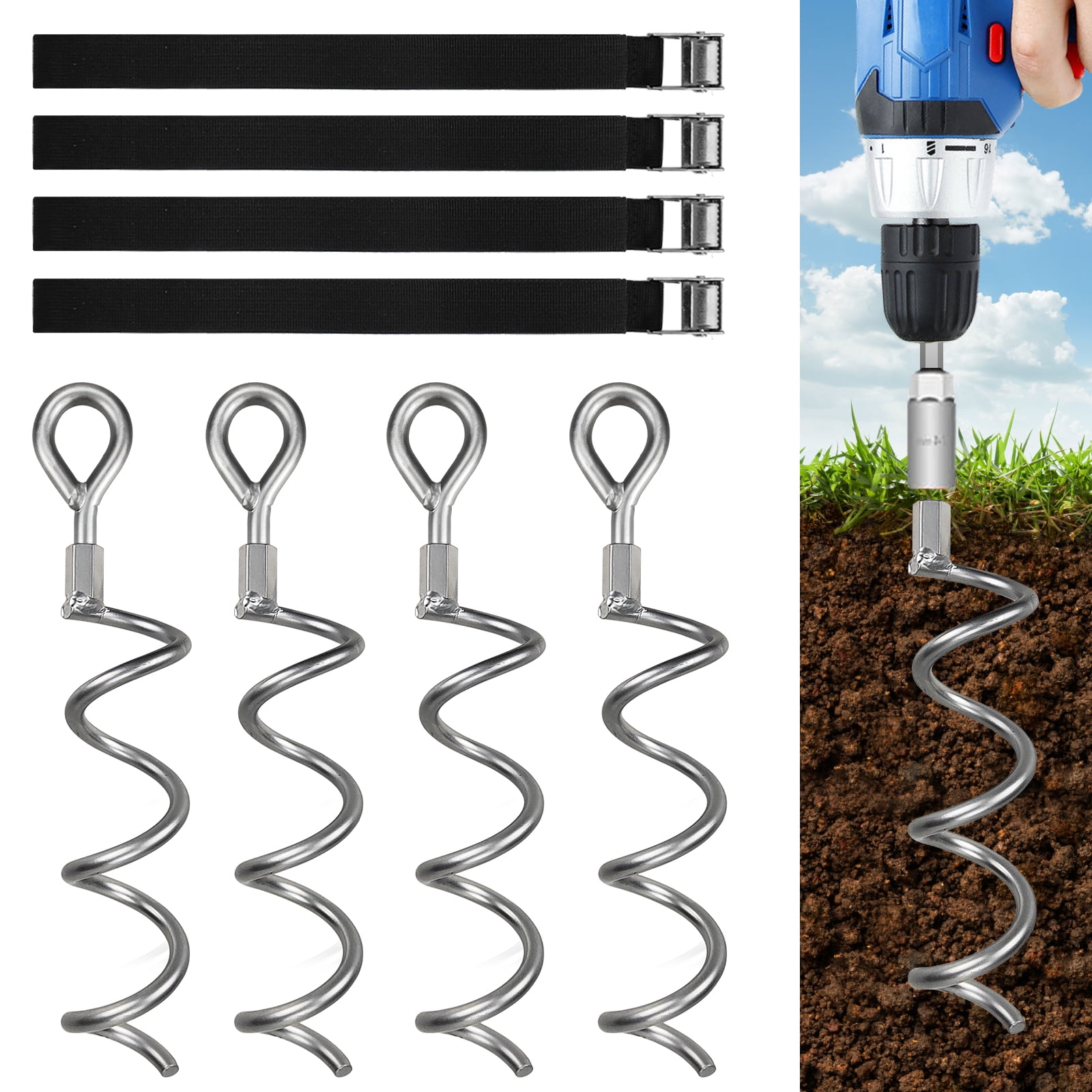Discover the Various Types of Ground Anchor for Your Next Project
When beginning on a building or landscape design task, understanding the different kinds of ground supports available is critical to guaranteeing both stability and sturdiness (Ground Anchor). From auger anchors, which master varied soil problems, to stake supports developed for temporary installations, the alternatives are many. In addition, concrete and screw supports present distinct advantages in particular situations, while deadman supports are tailored for applications needing resistance to lateral pressures. The option of an ideal anchor type can significantly influence the general success of your task, motivating further expedition into their particular benefits and applications.

Auger Anchors
Auger supports are a preferred selection in numerous building and construction and landscape design jobs as a result of their distinct design and effective anchoring abilities. These supports contain a helical screw-like shaft that is driven right into the ground, permitting a steady and safe hold. The spiral layout promotes very easy setup and makes best use of resistance versus lateral pressures, making auger anchors specifically reliable in applications such as fencing, temporary structures, and erosion control.
The setup procedure of auger supports is fairly straightforward. They can be manually or mechanically set up, depending upon the size and required deepness. This flexibility allows for their usage in diverse dirt conditions, from sandy to clayey terrains. Auger anchors can be conveniently eliminated and reused, which adds to their cost-effectiveness and sustainability.
Among the considerable benefits of auger supports is their capacity to distribute loads equally throughout the surrounding soil, minimizing the threat of soil disturbance and reducing environmental influence. In addition, they are less prone to heaving or loosening gradually contrasted to conventional securing approaches. Auger supports are an excellent option for tasks needing trustworthy and sturdy anchoring solutions.

Stake Anchors
When it involves securing structures in a variety of outside applications, stake supports provide a trustworthy and straightforward option. These supports are typically built from resilient products such as steel or light weight aluminum, created to hold up against ecological tensions while supplying optimal stability. Their basic style permits quick setup, making them an ideal choice for short-lived or permanent anchoring demands.
Risk anchors are specifically helpful in protecting camping tents, covers, and various other light-weight frameworks versus wind and weather. They operate by being driven right into the ground at an angle, creating a solid hold that stands up to pull-out forces - Ground Anchor. The performance of risk supports depends on a number of factors, consisting of soil kind, dampness material, and the angle of setup
For added safety and security, several risk supports feature attachment factors for bands or ropes, allowing for tension adjustments as required. In applications such as landscape design or building, they can properly stabilize equipment or frameworks on irregular terrain. In general, risk supports give a economical and versatile option for protecting numerous exterior installments, making them a preferred choice for service providers and do it yourself lovers alike.
Concrete Anchors
Concrete anchors provide a robust solution for protecting structures to concrete surfaces, guaranteeing stability and safety and security in numerous applications. These supports are necessary for projects ranging from property buildings to large-scale commercial installments. They come in different types, consisting of growth anchors, adhesive supports, and undercut anchors, each designed for particular load needs and ecological problems.
Growth anchors depend on mechanical mechanisms to grip the concrete when mounted. They are suitable for medium to heavy-duty applications. Sticky supports make use of high-strength epoxy or resin to bond the anchor to the concrete, offering exceptional load-bearing capacities, specifically in cracked concrete scenarios. Undercut anchors produce an one-of-a-kind form within the concrete, offering outstanding holding power, particularly in applications where tensile tons prevail.
Picking the appropriate concrete support includes thinking about factors such as the weight of the lots, the condition of the concrete, and ecological conditions. Appropriate installation techniques are critical to guarantee ideal efficiency and integrity. When implemented properly, concrete supports substantially boost the architectural honesty of numerous projects, making them crucial in contemporary building and construction methods. Comprehending the specific needs of your task will certainly assist in selecting the right kind of concrete anchor for the task.
Screw Anchors

Screw anchors are a flexible go to the website attaching solution that can be effectively employed in a range of applications where traditional concrete anchors might not suffice. These anchors contain a helical design that allows them click this link to be conveniently driven into the ground, making them perfect for use in soil and other substratums. Their special framework gives excellent holding power and resistance to pull-out pressures, making them appropriate for numerous tasks, from landscape design to structural support.
One of the main benefits of screw anchors is their simplicity of installment. They need minimal tools and can often be mounted without the requirement for excavation, which saves both time and labor prices. Additionally, screw supports can be removed and recycled, providing a lasting remedy for momentary applications.
Screw supports are specifically valuable in locations where soil problems are testing, such as loose or sandy soils. Their capacity to be installed at differing midsts enables personalization based upon certain task requirements. Overall, screw supports provide a effective and trusted securing method, making them an outstanding option for professionals and engineers looking for effective options for their jobs.
Deadman Anchors
Deadman supports function as a durable remedy for supporting frameworks in difficult problems, specifically where typical securing techniques may fall short. These supports consist of large, hefty things hidden underground, which create resistance versus lateral forces. The design usually includes a straight part, such as a block of concrete or a steel plate, hidden in the soil, to which cables or bands are affixed.
The efficiency of deadman anchors exists in their capability to distribute lots over a bigger area, reducing the threat of failure in unpredictable soil problems. They are specifically beneficial in applications such as this contact form maintaining walls, temporary frameworks, and incline stabilization, where dirt motion can jeopardize the integrity of the framework.
Installation of deadman anchors calls for mindful preparation to guarantee they are positioned at the right depth and orientation, maximizing their load-bearing ability. While they may need more labor and material than lightweight anchors, their reliability in adverse conditions makes them important for long-lasting jobs. Additionally, deadman supports are flexible and can be adapted to numerous applications, making them a best selection for engineers dealing with unique challenges in their jobs.
Conclusion
Auger supports excel in varied soil conditions, while stake supports suit short-term applications. For concrete surfaces, expansion and sticky anchors offer trustworthy alternatives, and screw anchors use versatility in challenging terrains.
In addition, concrete and screw supports existing distinct benefits in details circumstances, while deadman anchors are customized for applications requiring resistance to side forces - Ground Anchor.Auger anchors are a preferred selection in different building and construction and landscape design jobs due to their one-of-a-kind layout and efficient anchoring capabilities. They come in different kinds, including growth supports, sticky anchors, and undercut anchors, each developed for particular load demands and environmental conditions
Sticky anchors make use of high-strength epoxy or material to bond the anchor to the concrete, supplying exceptional load-bearing capabilities, specifically in fractured concrete situations. Generally, screw anchors supply a trustworthy and efficient anchoring technique, making them an exceptional option for contractors and designers seeking reliable solutions for their tasks.
Comments on “Key Facts to Understand About Choosing the Right Ground Anchor for Your Needs”